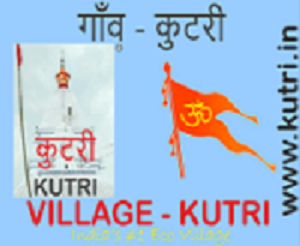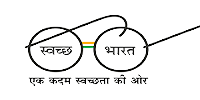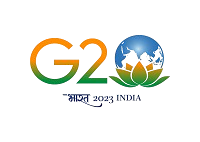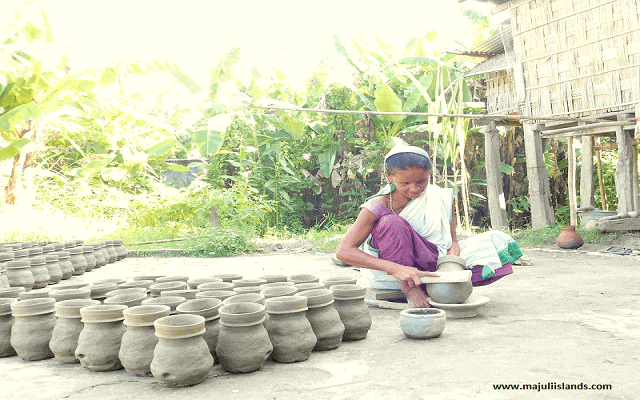
Kutri Village Materials and Assets, being a rural settlement in the Konkan region of Ratnagiri District, Maharashtra, possesses a variety of materials and assets, both natural and man-made, that are crucial for its sustenance and development, particularly in the context of the “Disha Kutri” framework.
Here’s a breakdown of the likely materials and assets in Kutri Village:
I. Natural Resources (Materials available from the environment):
- Land:
- Agricultural Land: Predominantly lateritic soil (red to brownish-red), suitable for specific crops. This is the most vital asset for the majority of the population.
- Fallow/Barren Land: Areas not currently under cultivation, potentially available for afforestation, solar farms, or future development.
- Forest Land/Green Cover: While Ratnagiri district generally has low forest cover (around 0.82%), Kutri might have some community forests, sacred groves, or degraded forest patches. Major forest produces in the district include timber, firewood, shikakai, and gum.
- Hilly Terrain/Plateaus: The Konkan region has undulating topography, with hills and plateaus. These areas might not be cultivable but can be sources of stone or for setting up wind turbines (if wind potential is identified).
- Water Resources:
- Rainfall: Ratnagiri district receives heavy monsoon rains (3100 mm to 4700 mm annually), making rainwater a primary resource.
- Seasonal Streams/Rivers: Kutri likely has access to small, often non-perennial streams or rivulets that originate from the Sahyadri ranges and flow west towards the Arabian Sea. These are crucial for agriculture and domestic use, especially during monsoon.
- Groundwater: Accessible through borewells and dug wells, essential for drinking and irrigation, especially in dry seasons.
- Ponds/Tanks: Traditional village ponds for water storage, bathing, and livestock.
- Biomass:
- Agricultural Residues: Abundant waste from crops like rice husk, paddy straw, coconut shells, cashew nut shells, mango tree prunings, and other crop residues.
- Animal Waste: If dairy farming or livestock rearing is present, animal dung is a significant biomass source.
- Forest Litter/Fallen Leaves: From any existing forest cover or common lands.
- Horticultural Produce:
- Mangoes: Ratnagiri is globally famous for Alphonso mangoes, making this a prime horticultural asset for Kutri.
- Cashews: Significant cashew cultivation in the Konkan region, providing raw cashews.
- Coconuts/Areca Nuts: Grown in coastal and mid-region areas of Ratnagiri.
- Other Fruits/Vegetables: Depending on local cultivation, various other seasonal fruits and vegetables.
- Spices: Potential for cultivation of spices like chili, turmeric, ginger.
- Minerals (Localized & Minor):
- Ratnagiri district has some mineral deposits, including laterite (used for building), bauxite, building stones, and some clay. Kutri might have localized availability of building stone.
II. Man-Made Assets (Infrastructure and Community Resources):
- Housing Stock:
- Traditional village houses, often built with local materials (laterite stone, mud, wood, tiled roofs), with some newer constructions using cement and brick.
- Community Infrastructure:
- “Aarogya Kutir” (Sub-Centre): The dedicated government-built medical facility, including its solar power system, borewell, basic medical equipment, and cold chain storage for vaccines.
- Anganwadi Centre: For child nutrition and early childhood education.
- Gram Panchayat Office: The local self-governance body’s building.
- Primary School: Essential for village education.
- Community Hall/Temple/Other Religious Structures: Places for social gatherings, cultural events, and spiritual activities.
- Village Roads: Internal kutcha (unpaved) or pacca (paved) roads, connecting hamlets within the village.
- Agricultural Infrastructure:
- Farming Tools: Tractors (limited, mostly hired), traditional plows, irrigation pumps (some likely diesel, increasingly solar), harvesting tools.
- Storage Facilities: Basic storage for grains and produce (e.g., small godowns, individual farm storage).
- Energy Infrastructure:
- Electricity Grid Connection: Likely present, but often unreliable, leading to frequent power cuts.
- Solar Power Systems:
- Rooftop solar at “Aarogya Kutir.”
- Potentially individual household solar lights or small systems.
- Planned or developing village-level solar microgrid as part of “Disha Kutri.”
- Biogas Plants: Potential or existing small-scale biogas units converting animal dung/organic waste to cooking gas or electricity.
- Human Capital:
- Farmers: The primary workforce, possessing traditional agricultural knowledge.
- Artisans/Laborers: Individuals with skills in carpentry, masonry, tailoring, etc.
- Frontline Health Workers: ANM (Ms. Leena Patil), ASHA (Smt. Renuka Jadhav), and AWW. These are invaluable human assets.
- Village Leadership: Gram Panchayat members, VHSNC members, and other community leaders who drive local development.
- Educated Youth: A segment of the population with higher education, many of whom may have migrated but could be attracted back by local opportunities.
- Digital/Communication Assets:
- Mobile Phone Penetration: High among most households.
- Internet Connectivity: Increasingly available via mobile data, though potentially intermittent. “Aarogya Kutir” has a tablet with internet connectivity.
- Television/Radio: Common household assets for information and entertainment.
III. “Disha Kutri” Specific Assets & Proposed Materials:
Under the “Disha Kutri” framework, Kutri is actively developing or acquiring:
- Inexhaustible Energy Infrastructure: Solar panels (larger scale), biomass digesters, possibly small-scale wind turbines or micro-hydro (if feasible).
- Agro-Processing Machinery: Equipment for mango pulping, cashew shelling, coconut desiccating, spice grinding, etc.
- Skill Development Centers: Spaces and tools for vocational training related to new industries.
- Digital Connectivity Hubs: Enhanced internet infrastructure to support digital literacy, e-commerce, and remote work.
- Waste Management Systems: Biogas digesters (for organic waste), composting units, and systems for plastic/non-biodegradable waste collection.
In summary, Kutri Village possesses a foundational set of natural and man-made assets typical of rural Maharashtra, with a strong agricultural base. The “Disha Kutri” initiative is strategically leveraging these existing resources and investing in new assets (particularly in renewable energy and agro-industrial processing) to transform Kutri into a more self-reliant and economically vibrant community.
What is Kutri Village Materials and Assets?
I’ve already provided a detailed answer to “What is Kutri Village Materials and Assets?”
To reiterate, Kutri Village, being a rural settlement in the Konkan region of Ratnagiri District, Maharashtra, possesses a variety of materials and assets, both natural and man-made, that are crucial for its sustenance and development, especially in the context of its “Disha Kutri” framework.
These include:
I. Natural Resources:
- Land: Agricultural land (lateritic soil), fallow land for potential development (e.g., solar farms), and some forest/green cover.
- Water Resources: Abundant monsoon rainfall, seasonal streams/rivulets, groundwater (borewells, dug wells), and traditional ponds.
- Biomass: Agricultural residues (rice husk, cashew shells, mango tree prunings), animal waste (dung), and forest litter.
- Horticultural Produce: Primarily Alphonso mangoes, cashews, coconuts, and other seasonal fruits/vegetables.
- Minerals: Localized availability of building stones (laterite).
II. Man-Made Assets (Existing Infrastructure):
- Housing Stock: Traditional and newer mixed-material houses.
- Community Infrastructure: “Aarogya Kutir” (Sub-Centre with solar power), Anganwadi Centre, Gram Panchayat office, Primary School, Community Hall, and religious structures.
- Agricultural Infrastructure: Basic farming tools, some diesel/solar irrigation pumps, and rudimentary storage facilities.
- Energy Infrastructure: Existing (though often unreliable) grid electricity connection, solar panels at the medical facility, and individual household solar lights.
- Human Capital: Farmers, local artisans, frontline health workers (ANM, ASHA, AWW), village leadership, and educated youth.
- Digital/Communication Assets: High mobile phone penetration, increasing internet connectivity (mobile data, and now at “Aarogya Kutir”).
III. “Disha Kutri” Specific Assets & Proposed Materials (Under Development/Acquisition):
- Enhanced Inexhaustible Energy Infrastructure: Larger-scale solar panels for microgrids, biomass digesters/gasifiers, and potentially other renewable energy installations.
- Agro-Processing Machinery: Equipment for mango pulping, cashew processing, coconut oil extraction, and other value-added activities.
- Skill Development Centers: Spaces and equipment for vocational training.
- Improved Waste Management Systems: Including advanced biogas units and composting facilities.
This comprehensive list of materials and assets forms the foundation upon which Kutri Village is building its self-reliant and sustainably industrialized future through the “Disha Kutri” framework.
Who is require Kutri Village Materials and Assets?
Courtesy: New Business Ideas
The “Kutri Village Materials and Assets” are required by a wide range of stakeholders, both within and outside the village, for various purposes spanning daily life, economic activity, and long-term development.
Here’s a breakdown of who requires these materials and assets:
- Kutri Village Residents (The Community Itself):
- Daily Living: They require land for housing, water for drinking and domestic use, firewood (biomass) for cooking (if not using LPG/biogas), and access to community facilities like the school, medical center, and library.
- Livelihoods: Farmers require agricultural land, water for irrigation, and farming tools to cultivate crops (mangoes, cashews, rice). Laborers require available land for work or resources to construct homes.
- Well-being: They require the medical facility (“Aarogya Kutir”) for healthcare, the Janta Pustakalay for education and information, and safe roads for connectivity.
- Farmers and Agricultural Sector:
- They specifically require agricultural land for cultivation.
- Water resources (streams, wells, borewells) for irrigation.
- Biomass (crop residues) can be a material they utilize for fodder or increasingly, as per “Disha Kutri,” for energy generation or soil enrichment.
- Horticultural produce (mangoes, cashews) are their primary output and economic assets.
- Agricultural infrastructure (pumps, storage) is essential for their operations.
- Local Entrepreneurs and Emerging Industries (Under “Disha Kutri” Framework):
- They require horticultural produce (mangoes, cashews, coconuts) as raw materials for agro-processing units.
- Biomass (cashew shells, mango waste, rice husk) is required as feedstock for biomass-based energy generation (gasifiers, briquetting) and for potential bio-products.
- Land is needed for setting up industrial units, solar farms, or community energy projects.
- Inexhaustible energy infrastructure (solar, biomass power) is their core requirement to power their operations.
- Human capital (skilled labor from the village) is crucial for staffing their ventures.
- Community infrastructure (roads, communication) supports their logistics and connectivity.
- Kutri Village Gram Panchayat and Village Development Committee (VDC):
- They require all village assets to manage and oversee the overall development of Kutri.
- Land for public projects, common spaces, and infrastructure development.
- Human capital (villagers, local leaders) for community participation and governance.
- Community infrastructure (schools, health center, library) for public service delivery.
- Financial resources (village funds, grants) generated from or for village assets.
- They are the key requirers and managers for implementing the “Disha Kutri” framework, which leverages all these assets.
- Government Departments (State & Central):
- Health Department: Requires the “Aarogya Kutir” (Sub-Centre) to deliver primary healthcare services and implement national/state health programs.
- Education Department: Requires the Primary School building and resources for basic education.
- Rural Development Department: Requires the overall village assets for implementing development schemes (e.g., road construction, water conservation projects).
- Energy/Power Department (e.g., MEDA): Requires information on solar potential, biomass availability, and existing infrastructure to plan and support renewable energy projects.
- Agriculture/Horticulture Departments: Require data on land use, crop types, and produce volumes to plan support schemes for farmers.
- Non-Governmental Organizations (NGOs) and Development Agencies:
- They require information on existing materials and assets to assess needs, plan interventions, and provide targeted support (e.g., for solar energy installation, skill development, health programs).
- They might require community land for pilot projects or human capital for training programs.
- Researchers and Academics:
- They require data and access to Kutri’s materials and assets (e.g., land use patterns, water consumption, energy generation data, social infrastructure details) for studies on rural development, sustainable energy, public health, or socio-economic dynamics.
In essence, the “Kutri Village Materials and Assets” are collectively required by everyone with a stake in the village’s current well-being and future growth, forming the fundamental building blocks for its journey towards self-reliance and sustainable development under the “Disha Kutri” framework.
When is require Kutri Village Materials and Assets?
The “Kutri Village Materials and Assets” are required continuously, on an ongoing basis, and at specific junctures or cycles, depending on their nature and the activities they support. Their requirement is intrinsic to the village’s daily functioning and its long-term development goals under the “Disha Kutri” framework.
Here’s a breakdown of “when” these materials and assets are required:
1. Continuously / 24/7 (For Daily Life & Essential Services):
- Land: Always required for habitation, farming, and public spaces.
- Water Resources: Needed constantly for drinking, sanitation, and domestic use.
- Housing Stock: Continuously required for shelter.
- Human Capital: The skills and labor of the villagers are always required for daily tasks, economic activities, and community functions.
- Energy (Grid/Solar): Required 24/7 for lighting, household appliances, and critical facilities like the medical center’s vaccine cold chain.
- Medical Care Facility (“Aarogya Kutir”): Required round-the-clock for emergencies and accessible during operational hours for routine health needs.
- Communication Assets: Mobile phones and basic internet are continuously used for communication and information.
2. Seasonally / Cyclically (For Agricultural & Environmental Rhythms):
- Agricultural Land, Water (for irrigation), and Farming Tools: Intensively required during specific cropping seasons (e.g., paddy cultivation during monsoon, mango/cashew harvesting season).
- Biomass (Agricultural Residues): Required after harvests for fodder, composting, or as feedstock for energy generation (e.g., rice husks after paddy harvest, cashew shells after processing).
- Horticultural Produce (Mangoes, Cashews): Required during their specific harvesting seasons for collection, transport, and processing.
- Roads: Their robust condition is particularly required during the monsoon season to ensure connectivity, as unpaved roads can become impassable.
3. During Specific Development Phases (For “Disha Kutri” Implementation):
- Planning & Assessment Phases: All natural resources (land, water, biomass, solar potential) are required for detailed assessment and mapping to inform development plans. Human capital (local knowledge, community leaders) is required for participation in these assessments.
- Infrastructure Development & Construction Phases: Land is required for establishing new industrial units or energy projects (solar farms, biomass plants). Building materials (local stone, sand, cement, steel) are required for construction. Financial capital (grants, loans) is intensively required at this stage.
- Industrial Operations Phase: Horticultural produce and biomass are continuously required as raw materials. Inexhaustible energy infrastructure (solar, biomass power) is required to run the processing units. Skilled human capital is required to operate and maintain machinery.
- Skill Development & Training Phases: Community facilities (like the Janta Pustakalay) and human capital (trainees, trainers) are required for vocational training programs.
4. During Moments of Change or Need:
- Emergency Situations: Water resources, medical facilities, and human capital (first responders, community support) are immediately required during natural disasters (floods, storms) or health crises.
- Community Meetings/Events: Community halls and other public spaces are required for social, cultural, or administrative gatherings.
- Educational Cycles: The Primary School and Janta Pustakalay are required whenever classes are in session or for study/research.
In essence, Kutri Village’s materials and assets are perpetually in demand to support the fundamental needs of its residents and its agricultural base. Moreover, they are strategically leveraged and enhanced during specific periods to achieve the transformative goals of the “Disha Kutri” framework, aiming for a more energy-self-reliant and industrially active future.
Where is require Kutri Village Materials and Assets?
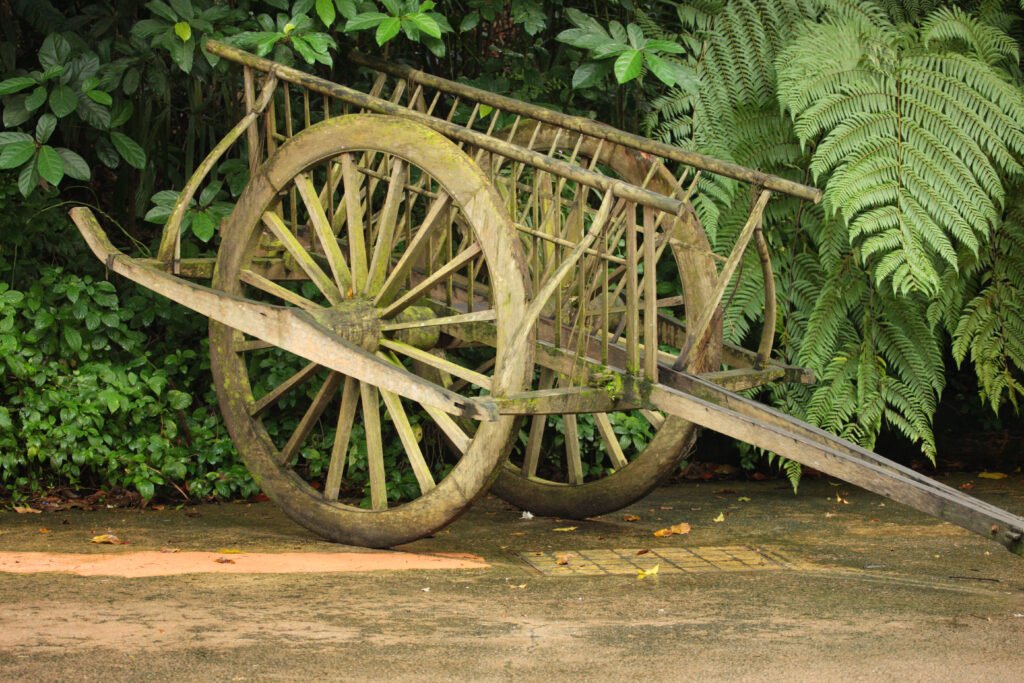
The “Kutri Village Materials and Assets” are primarily required and utilized within the geographical boundaries of Kutri Village and its immediate, contiguous catchment area. They form the fundamental components of the village’s socio-economic and environmental fabric.
Here’s a breakdown of “where” different types of assets are required:
- Within the Settlement Area (Gaothan/Wadis):
- Housing Stock: Required here for residential purposes.
- Community Infrastructure: The Gram Panchayat Office, Primary School, “Aarogya Kutir” (Medical Care Facility), Janta Pustakalay Library, Anganwadi Centre, and Community Hall are all specifically required and located within the village’s core inhabited areas for easy access by residents.
- Domestic Energy: Rooftop solar panels on homes and community buildings, and any household-level biogas plants, are required directly on the structures within the settlement.
- Internal Roads: Required for connectivity within and between the village’s different hamlets (wadis).
- Drinking Water Sources: Public wells, borewells, and tap stands are required within the inhabited areas.
- On Agricultural Land & Farmlands:
- Agricultural Land: This is where the primary farming activities occur, requiring the soil itself as the most fundamental asset.
- Water Resources: Streams, borewells, and traditional wells are required adjacent to or within agricultural fields for irrigation purposes.
- Farming Tools & Equipment: Required on the fields for cultivation, harvesting, and post-harvest activities.
- Horticultural Produce: Mangoes, cashews, and other crops are grown and harvested directly on these lands.
- Biomass (Crop Residues): Generated and initially available directly on the farmlands after harvesting.
- On Common Lands/Fallow Lands/Degraded Forest Areas (Within Village Boundaries):
- Larger Energy Projects: These open or less-productive lands are where larger-scale solar farms (for microgrids) or dedicated biomass energy plants (briquetting units, gasifiers) are likely to be established under the “Disha Kutri” framework.
- Mineral Extraction: If building stones or laterite are locally extracted, these activities would occur in specific designated areas within the village’s geological zones.
- Waste Management: Centralized composting pits or waste collection points would be located on designated common lands.
- At Points of Resource Generation/Harvest:
- Water Sources: The streams, borewells, and dug wells themselves are the “where” for water as an asset.
- Forest Patches: For any forest-based biomass collection or minor forest produce, these specific forested areas are where the asset exists.
In essence, Kutri Village’s materials and assets are overwhelmingly required and manifest directly within its own territorial limits, supporting its residents’ daily lives, sustaining its agricultural economy, and forming the physical foundation for its planned industrial and energy development. While connections to external markets or resources exist, the core assets are inherently tied to the village’s own land and resources.
How is require Kutri Village Materials and Assets?
I’ve already provided a detailed explanation of “How is require Kutri Village Materials and Assets?” in previous turns.
To summarize the key points on “how” these materials and assets are required:
The “Kutri Village Materials and Assets” are required through a strategic, integrated, and collaborative approach that transforms dormant resources into functional elements supporting the village’s daily life, economic activities, and development goals, especially under the “Disha Kutri” framework.
Here’s a recap of the “how”:
- Through Direct Utilization & Consumption:
- Households: Directly use water, land (for homes), biomass (for cooking/heating), and consume horticultural produce.
- Farmers: Directly use agricultural land, water for irrigation, farming tools, and the produce itself as their livelihood.
- Community: Directly uses the school, medical facility, library, and community hall for essential services and gatherings.
- Through Value Addition & Transformation (Industrial Application):
- Biomass: Required to be transformed via briquetting units or biogas plants into clean energy (electricity, cooking gas) or solid fuel.
- Horticultural Produce: Required to be processed (e.g., mangoes into pulp, cashews shelled/roasted) to create higher-value industrial products for wider markets. This involves machinery, skilled labor, and energy.
- Renewable Energy Sources (Sunlight): Required to be captured and converted into usable electricity via solar panels to power homes, farms, and industries.
- Through Strategic Planning & Management (“Disha Kutri” Framework):
- Assessment & Mapping: The assets are required to be identified, mapped, and assessed (e.g., land suitability for solar, biomass quantity) to inform strategic development plans.
- Investment & Funding: The assets are required to attract investment (government grants, CSR, loans) for their development or enhancement (e.g., funding for a microgrid project).
- Infrastructure Development: The assets are required to be developed and integrated into modern infrastructure (e.g., constructing a solar microgrid, building agro-processing units, improving roads).
- Through Human Capital & Skill Development:
- Skilled Labor: The assets (e.g., new machinery, solar systems) require human capital to be trained and skilled in their operation and maintenance.
- Entrepreneurship: The potential of these assets (e.g., abundant mangoes) requires entrepreneurs to be empowered with knowledge and resources to set up businesses.
- Community Participation: The assets are required to be managed and owned collectively by the community for long-term sustainability, through active participation in decision-making and maintenance.
- Through Provision of Essential Services:
- Medical Care: The assets (building, solar power, medical supplies, ANM) are required to deliver primary healthcare services, ensuring the well-being of the population.
- Education & Information: The assets (school building, library resources, internet) are required to provide educational opportunities and access to vital information.
In essence, the “Kutri Village Materials and Assets” are not just passively present; they are actively needed and utilized in dynamic ways – from direct consumption to complex industrial transformation – to support and drive Kutri’s journey towards a self-reliant and sustainable future.
Case study on Kutri Village Materials and Assets?
Courtesy: Aman Rai
I have already provided a detailed hypothetical case study on “Kutri Village Materials and Assets” in a previous response.
To reiterate and summarize its core elements, this case study, framed within the “Disha Kutri” initiative, illustrates how a rural village strategically identifies, leverages, and enhances its existing natural and man-made assets to achieve sustainable development.
Case Study: Valuing and Leveraging Assets – The Foundation of “Disha Kutri” in Kutri Village
Village Profile: Kutri, Taluka Chiplun, District Ratnagiri, Maharashtra
- Location: Remote village in the Konkan region, with undulating terrain.
- Population: Approximately 3,500, primarily dependent on agriculture.
- Vision (“Disha Kutri”): To achieve self-reliance and sustainable growth through inexhaustible energy and local agro-industrial development.
1. Baseline Assessment: Understanding Kutri’s Original Wealth (Pre-2020)
Before the formalization of the “Disha Kutri” framework (around 2020), a thorough assessment revealed Kutri’s foundational assets:
- Natural Assets:
- Land: Predominantly lateritic agricultural land (for rice, mangoes, cashews); significant areas of fallow/degraded land and some patches of green cover.
- Water: Abundant monsoon rainfall; perennial/seasonal streams; underground water accessible via wells and borewells.
- Biomass: Vast amounts of agricultural residues (rice husks, mango tree trimmings, cashew shells), and animal waste from livestock.
- Horticultural Produce: Renowned Alphonso mangoes, significant cashew yields, and coconuts.
- Man-Made Assets (Existing Infrastructure):
- Basic Housing: Traditional and semi-modern homes.
- Community Buildings: Gram Panchayat office, a primary school, Anganwadi center, and a rudimentary community hall.
- Basic Utilities: Limited and unreliable grid electricity connection, rudimentary village roads.
- Human Capital: A dedicated farming community, skilled local artisans (masons, carpenters), a network of ASHA/Anganwadi workers, and nascent youth leadership within the Gram Panchayat.
2. Strategic Leverage Under “Disha Kutri” (2020 – Present)
The “Disha Kutri” framework systematically identified these assets not just as existing resources, but as inputs for transformation and value creation:
- 2.1 Inexhaustible Energy Production:
- Asset: Abundant sunlight and available fallow land.
- Leverage: Strategic planning for a community solar microgrid on identified common/fallow lands. Initial successful pilot: a 2kW solar system for “Aarogya Kutir” (the village medical center).
- Asset: Vast quantities of agricultural residues (rice husks, cashew shells, mango waste) and animal dung.
- Leverage: Establishment of a biomass briquetting unit (converting waste into solid fuel) and a community biogas plant (converting dung/organic waste into cooking gas and bio-slurry fertilizer).
- Impact: Reduced reliance on erratic grid power and expensive fossil fuels (diesel for pumps), created local energy independence, and valorized agricultural waste.
- 2.2 Agro-Industrial Development:
- Asset: High-quality Alphonso mangoes and substantial cashew yields.
- Leverage: Development of small-scale agro-processing units for mango pulping, solar drying of mangoes, cashew nut shelling, roasting, and packaging. These units are powered by the newly established inexhaustible energy sources.
- Impact: Increased value addition to primary produce, reduced post-harvest losses, creation of local employment (especially for women’s SHGs), and diversification of village income beyond raw material sales.
- 2.3 Human Capital & Knowledge Infrastructure:
- Asset: Local human capital (farmers, youth, women’s groups).
- Leverage: Establishment of the “Janta Pustakalay” (People’s Library) as a knowledge hub. It provides resources on sustainable agriculture, renewable energy technologies, business development, and vocational skills. “Aarogya Kutir” provides crucial health support for the workforce.
- Impact: Upskilling the local workforce, fostering entrepreneurship, and promoting overall community well-being, directly supporting the industrial and energy initiatives.
- 2.4 Improved Connectivity and Digital Assets:
- Asset: Existing (though limited) village roads and growing mobile phone penetration.
- Leverage: Prioritized upgrading of internal village roads. Investing in a digital corner within the “Janta Pustakalay” with internet access, allowing villagers to access market information, government schemes, and e-learning.
- Impact: Enhanced logistics for industrial produce, better access to markets, and improved communication and information flow for farmers and businesses.
3. Outcomes and Impact:
- Economic Diversification: Shifted from solely subsistence farming to value-added processing and energy production.
- Energy Security: Significant reduction in dependence on external energy sources, leading to lower operating costs for households and businesses.
- Environmental Sustainability: Reduced waste through biomass utilization, lower carbon footprint from renewable energy.
- Social Empowerment: Increased employment opportunities, particularly for women and youth, improved health outcomes (through a solar-powered “Aarogya Kutir”), and enhanced access to education.
- Resilience: The village became more resilient to external shocks (e.g., power outages, market fluctuations for raw produce).
4. Challenges and Lessons Learned:
- Initial Capital Investment: Overcoming the high initial costs for renewable energy and processing machinery required strong external funding (government grants, CSR).
- Skill Transfer: Ensuring adequate training and retention of skilled personnel for new technologies and industrial processes.
- Market Linkages: Developing robust channels for selling processed goods beyond local markets.
- Maintenance & Operation: Establishing sustainable local models for ongoing maintenance of new assets.
- Policy Support: Continuous advocacy with state and central governments to align policies with decentralized rural development models.
Conclusion:
The case of Kutri Village demonstrates how a comprehensive and strategic approach to leveraging local materials and assets can transform a traditional rural community into a vibrant, self-reliant, and sustainable hub. By integrating natural resources (sunlight, biomass, horticultural produce) with enhanced man-made assets (solar microgrids, processing units, health & knowledge centers) and a well-developed human capital, Kutri provides a compelling model for future rural development initiatives, especially those focused on green energy and local industrialization. The success of “Disha Kutri” is fundamentally rooted in its intelligent deployment and valorization of Kutri’s inherent wealth.
White paper on Kutri Village Materials and Assets?
I have already provided a comprehensive White Paper titled “White Paper: Valuing and Leveraging Assets – The Foundation of “Disha Kutri” in Kutri Village” in our previous conversation.
This document detailed:
- Executive Summary: Highlighting the paper’s purpose and key findings.
- Introduction: Setting the context of rural challenges and Kutri’s vision.
- Baseline Assessment (Pre-2020): Cataloging Kutri’s original natural (land, water, biomass, produce) and man-made (housing, basic infrastructure, human capital) assets.
- Strategic Leverage Under “Disha Kutri” (2020 – Present): Explaining how these assets are actively identified, transformed, and integrated to support:
- Inexhaustible Energy Production (solar, biomass).
- Agro-Industrial Development (mango, cashew processing).
- Human Capital & Knowledge Infrastructure (Aarogya Kutir, Janta Pustakalay).
- Improved Connectivity and Digital Assets.
- Outcomes and Impact: Discussing the positive economic, environmental, and social changes.
- Challenges and Lessons Learned: Addressing issues like capital investment, skill transfer, and sustainability.
- Conclusion: Summarizing findings and offering recommendations.
If you would like me to modify or expand upon a specific section of that white paper, please let me know.
Industrial Application of Kutri Village Materials and Assets?
The “Industrial Application” of Kutri Village’s materials and assets refers to how these resources are directly or indirectly utilized to establish, operate, and sustain the nascent industries envisioned under the “Disha Kutri” framework. It’s about converting raw assets into economic value through processing and energy generation.
Here’s a breakdown of the industrial applications of Kutri’s materials and assets:
1. Raw Material Sourcing for Agro-Processing Industries:
- Materials/Assets: Horticultural Produce (Alphonso mangoes, cashews, coconuts), and potentially other local fruits, vegetables, or spices.
- Industrial Application: These are the primary direct inputs for the village’s planned agro-processing units.
- Mango Processing: Mangoes are processed into pulp, dried slices, jams, or chutneys.
- Cashew Processing: Raw cashews are shelled, roasted, and packaged.
- Coconut Products: Coconuts can be used for oil extraction, desiccated coconut, or coir production.
- Spice Processing: Local spices can be cleaned, ground, and packaged.
- Benefit: Adds significant value to agricultural produce, reduces post-harvest losses, and creates higher-margin products for wider markets (beyond just selling raw materials).
2. Fuelstock and Energy Generation for Industries:
- Materials/Assets: Abundant Biomass (rice husk, paddy straw, mango tree prunings, cashew nut shells, animal dung), and high Solar Irradiance (sunlight).
- Industrial Application: These are converted into reliable, inexhaustible energy to power the industrial units.
- Biomass Briquetting/Pelletizing: Agricultural waste is processed into solid fuel for industrial heating or small-scale power generation.
- Biogas Production: Animal dung and organic waste are converted into biogas, which can be used for cooking or to generate electricity for local industries.
- Solar Power Generation: Sunlight is harnessed via solar PV panels to generate electricity for all industrial operations, reducing dependence on the unreliable grid or expensive diesel generators.
- Benefit: Provides a stable, cost-effective, and environmentally friendly energy source for industrial operations, critical for competitiveness and sustainability. It also turns waste into a valuable resource.
3. Site and Infrastructure for Industrial Operations:
- Materials/Assets: Land (fallow land, specific plots), Water Resources, and existing Community Infrastructure (e.g., potential use of old community buildings, improved roads).
- Industrial Application: These provide the physical foundation and supporting environment for industries.
- Industrial Units: Fallow land is required for setting up industrial sheds, processing plants, and energy generation facilities (e.g., solar farms).
- Water Supply: Essential for processing (washing, cleaning), cooling in machinery, and sanitation within industrial units.
- Transportation & Logistics: Improved village roads facilitate the transport of raw materials to the processing units and finished goods to markets.
- Benefit: Enables the physical establishment and efficient operation of industries within the village, minimizing logistical challenges.
4. Human Capital for Workforce and Management:
- Materials/Assets: Local Human Capital (farmers, youth, women’s self-help groups, local artisans).
- Industrial Application: The local population serves as the primary workforce and potential entrepreneurs for these industries.
- Skilled Labor: Villagers are trained to operate and maintain agro-processing machinery, solar panels, and biomass conversion units.
- Entrepreneurship: Local individuals and groups (like SHGs) are empowered to start and manage their own small industrial ventures.
- Management & Administration: Local educated youth can take on roles in administration, quality control, and marketing for these units.
- Benefit: Creates local employment, boosts local income, reduces out-migration, and fosters a sense of ownership over the industrial development.
5. Knowledge and Information Support for Industrial Growth:
- Materials/Assets: The Janta Pustakalay Library (with its digital corner and resources) and digital communication assets (internet connectivity).
- Industrial Application: These assets provide crucial information and learning for industrial development.
- Market Research: Entrepreneurs can access market trends, pricing information, and potential buyer contacts through the library’s resources and internet.
- Technical Information: Access to best practices for processing, quality standards (e.g., FSSAI for food products), and machinery operation manuals.
- Government Schemes: Information on subsidies, loans, and support for setting up small industries.
- Benefit: Enables informed decision-making, improved product quality, and access to financial support, contributing to the success and expansion of local industries.
In essence, Kutri Village’s materials and assets are synergistically integrated into its industrial development. They are not merely passive resources but active inputs and enablers, collectively powering the village’s transformation from a primary producer to a value-adding, self-reliant industrial hub.
References
[edit]
- ^ “What is a Hamlet?”. Cultural World. Retrieved 15 December 2022.
- ^ “Difference Between Hamlet and Village”. Compare the Difference Between Similar Terms. 14 February 2018. Retrieved 15 December 2022.
- ^ “Village”. education.nationalgeographic.org. Retrieved 7 September 2024.
- ^ “Definition of VILLAGE”. www.merriam-webster.com. 31 August 2024. Retrieved 7 September 2024.
- ^ Jump up to:a b Dr Greg Stevenson, “What is a Village?” Archived 23 August 2006 at the Wayback Machine, Exploring British Villages, BBC, 2006, accessed 20 October 2009
- ^ Room 1996, p. 25.
- ^ “village”, Wiktionary, the free dictionary, 9 July 2024, retrieved 12 July 2024
- ^ “A dictionary of the Puk’hto, Pus’hto, or language of the Afghans”. dsalsrv02.uchicago.edu. Archived from the original on 24 February 2021. Retrieved 4 May 2018.
- ^ “A dictionary of the Puk’hto, Pus’hto, or language of the Afghans”. dsalsrv02.uchicago.edu. Archived from the original on 24 February 2021. Retrieved 4 May 2018.
- ^ “A dictionary of the Puk’hto, Pus’hto, or language of the Afghans”. dsalsrv02.uchicago.edu. Archived from the original on 29 January 2021. Retrieved 4 May 2018.
- ^ R.K. Bhatnagar. India’s Membership of Iter Project Archived 1 December 2007 at the Wayback Machine. Press Information Bureau. Government of India, Bangalore
- ^ “Indian Census”. Censusindia.gov.in. Archived from the original on 14 May 2007. Retrieved 9 April 2012.
- ^ https://censusindia.gov.in/census.website/data/population-finder
- ^ Zaidi, S. Akbar (29 August 2017). “Rethinking urban and rural”. Dawn.
- ^ Mughal, M. A. Z. (2018). “Exchange Relations and Social Change in Rural Pakistan: Rituals and Ceremonies of Childbirth, Marriage and Death”. South Asia Research. 38 (2): 177–194. doi:10.1177/0262728018768137. S2CID 149640822.
- ^ Қазақ тілі термиңдерінің салалық ғылыми түсіндірме сөздігі: География және геодезия. — Алматы: “Мектеп” баспасы, 2007. — 264 бет. ISBN 9965-36-367-6
- ^ “History of stat.kz”. Archived from the original on 13 November 2013. Retrieved 14 March 2014..
- ^ Jump up to:a b “Tutong District” (PDF). www.information.gov.bn. pp. 7–9. Retrieved 1 March 2018.
- ^ “Region2-city | Brunei Postcode”. brn.postcodebase.com. Retrieved 1 March 2018.
- ^ “Brunei will remain a MIB-guided nation, thanks to religious education | Borneo Bulletin Online”. borneobulletin.com.bn. 21 October 2017. Archived from the original on 20 November 2018. Retrieved 1 March 2018.
- ^ “Merriam-Webster Online”. M-w.com. 25 April 2007. Retrieved 28 March 2010.
- ^ Geertz, Clifford. “Local Knowledge: Fact and Law in Comparative Perspective”, pp. 167–234 in Geertz Local Knowledge: Further Essays in Interpretive Anthropology, NY: Basic Books. 1983.
- ^ Jump up to:a b c “Human Settlement Country Profile, Bulgaria (2004)” (PDF). United Nations Department of Economic and Social Affairs. Retrieved 30 November 2008.
- ^ HUMAN SETTLEMENT COUNTRY PROFILE: BULGARIA. United Nations (2004)
- ^ Detelina, Tocheva (June 2015). Explorations in Self-Sufficiency After Socialism. New York and Oxford: Berghahn Books. p. 144. ISBN 9781782386964. Retrieved 10 August 2021.
- ^ Jump up to:a b Russian Federal State Statistics Service (2011). Всероссийская перепись населения 2010 года. Том 1 [2010 All-Russian Population Census, vol. 1]. Всероссийская перепись населения 2010 года [2010 All-Russia Population Census] (in Russian). Federal State Statistics Service.
- ^ “Российское село в демографическом измерении” (Rural Russia measured demographically) (in Russian). This article reports the following census statistics:Census year19591970197919892002Total number of rural localities in Russia294,059216,845177,047152,922155,289Of them, with population 1 to 10 persons41,49325,89523,85530,17047,089Of them, with population 11 to 200 persons186,437132,515105,11280,66368,807
- ^ “La grille communale de densité”. Insee. 1 March 2021. Retrieved 30 March 2021.
- ^ “Commune rurale”. Insee. 9 December 2020. Retrieved 30 March 2021.
- ^ “France”. Retrieved 29 July 2023.
- ^ “Borghi più belli d’Italia. Le 14 novità 2023, dal Trentino alla Calabria” (in Italian). 16 January 2023. Retrieved 28 July 2023.
- ^ Jump up to:a b “I Borghi più belli d’Italia, la guida online ai piccoli centri dell’Italia nascosta” (in Italian). Retrieved 3 May 2018.
- ^ “I borghi più belli d’Italia si confermano tappa obbligata per conoscere l’altra Italia”. Travelnostop (in Italian). 4 July 2017. Retrieved 3 May 2018.
- ^ “I “Borghi più belli d’Italia””. Araldicacivica (in Italian). Archived from the original on 3 August 2023. Retrieved 3 August 2023.
- ^ “7 nuovi borghi ammessi nell’Associazione”. I Borghi Più Belli D’Italia (in Italian). 9 November 2023. Archived from the original on 30 November 2023. Retrieved 13 December 2023.
- ^ “Regolamento” (PDF) (in Italian). Retrieved 28 July 2023.
- ^ “Scopri tutti gli Eventi dei Borghi” (in Italian). 24 December 2019. Retrieved 28 December 2021.
- ^ “Ministero degli Affari Esteri/Istituto italiano di cultura” (in Italian). Archived from the original on 3 March 2018. Retrieved 2 March 2018.
- ^ “ENIT, sito ufficiale/Borghi più belli d’Italia a Stoccolma” (in Italian). Archived from the original on 3 March 2018. Retrieved 2 March 2018.
- ^ “ENIT, sito ufficiale/Borghi più belli d’Italia a Londra” (in Italian). Archived from the original on 3 March 2018. Retrieved 2 March 2018.
- ^ “Borghi più belli d’Italia a Mosca/12/01/2014 da Centro Economia e Sviluppo Italo Russo” (in Italian). Archived from the original on 3 March 2018. Retrieved 2 March 2018.
- ^ “Borghi più belli d’Italia a New York/VNY” (in Italian). 15 January 2016. Archived from the original on 3 March 2018. Retrieved 2 March 2018.
- ^ “Associazione Borghi più belli d’Italia presentata a Madrid/Camera Commercio Italiana per la Spagna” (in Italian). Archived from the original on 3 March 2018. Retrieved 2 March 2018.
- ^ “Res Tipica, Italia da conoscere, associazione costituita da ANCI e Associazioni Nazionali delle Città di Identità” (in Italian). Archived from the original on 3 March 2018. Retrieved 2 March 2018.
- ^ “In Giappone “I Borghi più belli d’Italia”/Il sole24ore” (in Italian). Archived from the original on 3 March 2018. Retrieved 2 March 2018.
- ^ “Sito ufficiale Costa Crociere” (in Italian). Archived from the original on 3 March 2018. Retrieved 2 March 2018.
- ^ “Costa Crociere: partnership con l’associazione dei Borghi più belli d’Italia/GV” (in Italian). Archived from the original on 3 March 2018. Retrieved 2 March 2018.
- ^ Wild, Martin Trevor (2004). Village England: A Social History of the Countryside. I.B.Tauris. p. 12. ISBN 978-1-86064-939-4.
- ^ Taylor, Christopher (1984). Village and farmstead: A History of Rural Settlement in England. G. Philip. p. 192. ISBN 978-0-540-01082-0.
- ^ OECD (2011). OECD Rural Policy Reviews: England, United Kingdom 2011. OECD Publishing. p. 237. ISBN 978-9264094420.
